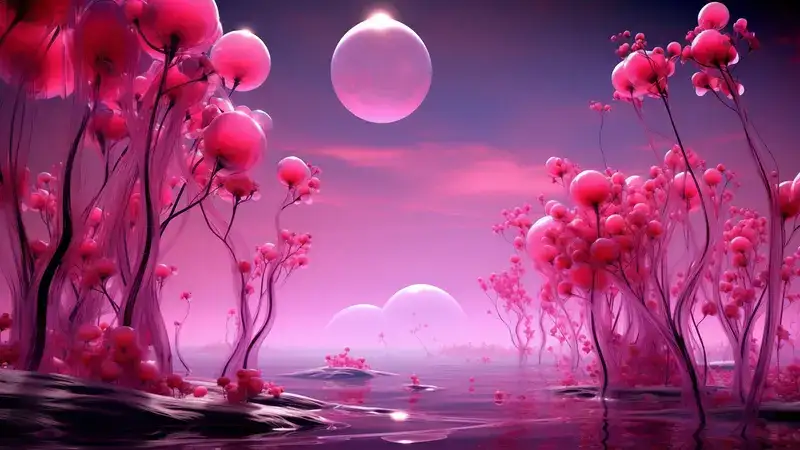
The Allure of Aesthetics: An Exploration of Pink
Aesthetics, in its broadest sense, encompasses the principles and appreciation of beauty and taste. Among the various elements that contribute” aesthetic:jmva9pr6yww= pink” to aesthetics, color plays a pivotal role. One color that stands out, often eliciting strong emotional and psychological responses, is pink. This article delves into the aesthetic significance of pink, examining its cultural, psychological, and artistic dimensions.
Cultural Significance of Pink
In many cultures, pink symbolizes different things, ranging from ” aesthetic:jmva9pr6yww= pink” femininity to love and romance. Historically, people associated pink with femininity, especially in Western societies. The 20th century solidified this association as marketers and advertisers targeted pink products primarily at women and girls. However, pink’s cultural significance varies widely. For instance, in Japan, pink often symbolizes spring and the cherry blossom, reflecting themes of renewal and transient beauty. Conversely, in other cultures, pink might not carry the same gendered connotations and may represent joy, health, or even political movements, such as the pink ribbons for breast cancer awareness.
Psychological Impact of Pink
The psychological effects of pink can vary based on its shade and context. Soft pinks often evoke feelings of calmness and nurture. This calming effect explains why many institutions, such as hospitals and schools, incorporate pink into their design to create soothing environments. On the other hand, bright, hot pinks can stimulate energy and exuberance, often used in fashion and advertising to ” aesthetic:jmva9pr6yww= pink” capture attention and convey boldness. The dichotomy within pink’s psychological impact underscores its versatility and depth as a color within aesthetic frameworks.
Pink in Art and Fashion
Artists and designers have long employed pink to convey various themes and emotions. In art, pink often appears in depictions of romantic and serene scenes. For example, the Impressionists frequently used pink to capture the delicate nuances of light and nature. In contemporary art, pink can subvert traditional norms, challenging gender stereotypes and exploring new aesthetic frontiers.
Fashion, too, embraces pink for its versatility and statement-making potential. Designers like Elsa Schiaparelli revolutionized fashion with her use of “shocking pink,” a vibrant hue that broke away from conventional colors of the time. Today, pink continues to dominate fashion runways and street styles, symbolizing both rebellion and sophistication. Whether in haute couture or casual wear, pink remains a powerful tool for expressing individuality and creativity.
Pink in Interior Design
Interior designers utilize pink to create various moods and atmospheres within a space. Soft pinks can add warmth and comfort to bedrooms and living areas, while brighter pinks can energize a room, making ” aesthetic:jmva9pr6yww= pink”it feel lively and dynamic. Combining pink with different textures and materials can result in spaces that are both aesthetically pleasing and emotionally engaging. For example, pairing pink with metallic accents like gold or silver can add a touch of glamour and sophistication.
The Evolution of Pink in Pop Culture
Pop culture continually redefines the aesthetic appeal of pink. From the pink Cadillac in Elvis Presley’s songs to the iconic pink of Barbie, pink often symbolizes fun, youth, and playfulness. Films like “Legally Blonde” and “Mean Girls” utilize pink to define characters and their social status, further embedding the color within the cultural zeitgeist. Musicians, too, adopt pink in their branding and performances, using its vibrant and playful nature to connect with audiences.
Pink in Technology and Media
With the advent of digital media and technology, pink has found new avenues of expression. Graphic designers and digital artists use pink to create visually striking content that captures attention on screens. Pink’s visibility and vibrancy make it an effective color for user interfaces, branding, and marketing campaigns. Moreover, the rise of social media platforms like Instagram and Pinterest has popularized pink aesthetics in online communities, where users curate and share visually cohesive content.
The Future of Pink Aesthetics
Looking forward, pink will continue to evolve within aesthetic discourses. As societies challenge traditional gender norms and embrace more fluid understandings of identity, pink’s role as a color may also transform. Designers and artists will likely explore new ways to incorporate pink into their work, pushing ” aesthetic:jmva9pr6yww= pink”the boundaries of what this color can represent. Additionally, technological advancements in color production and digital media will expand the possibilities for using pink in innovative and impactful ways.
Conclusion
The aesthetic allure of pink lies in its multifaceted nature. Its cultural significance, psychological impact, and versatile applications in art, fashion, interior design, and technology all contribute to its enduring appeal. As a color, pink transcends simple associations ” aesthetic:jmva9pr6yww= pink” with femininity or romance, embodying a wide range of emotions and meanings. Whether calming and nurturing or bold and rebellious, pink remains a powerful force within the world of aesthetics, continually inspiring and captivating those who engage with it. See More
